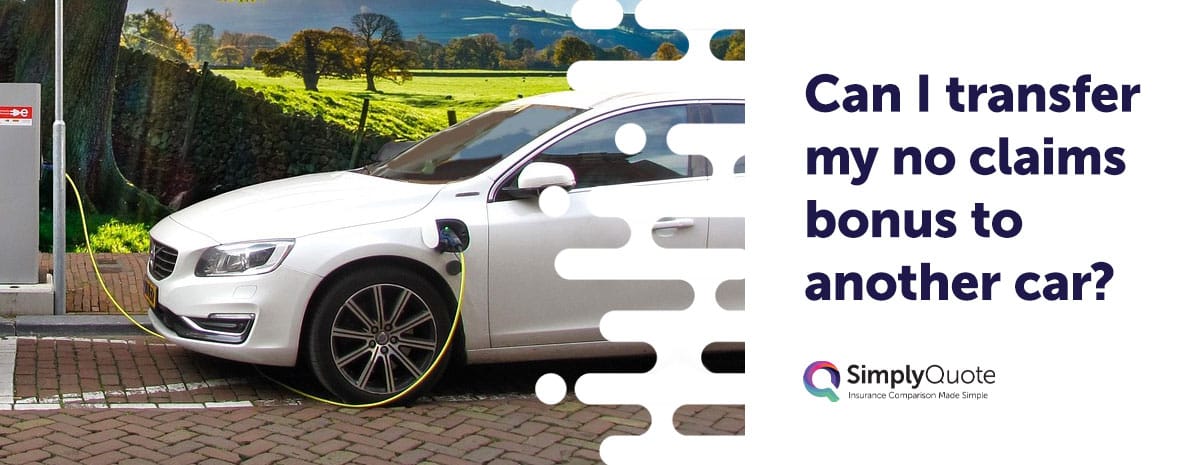Can I transfer my no claims bonus to another car?
Yes, in the UK you can usually transfer your no claims bonus (NCB) to another car, but it can only be applied to one vehicle at a time and proof is required.
The no claims bonus is tied to the driver, not the car, which means it follows you when you change vehicles or insurers. This makes it one of the most valuable assets a motorist can build, often reducing premiums by 30% after just one year and as much as 60% after five years.
Most insurers allow transfers between vehicles and providers, but the rules aren’t identical. Some will limit the discount if your existing NCB exceeds their maximum cap, while others may not accept NCB earned abroad or on a different vehicle type, such as a van. In addition, if there’s a gap of more than two years without cover, the bonus can usually no longer be used.
This article explains what a no claims bonus is, how transfers work, the proof you’ll need, and the limitations to be aware of when moving your NCB to another car or insurer.

What is a no claims bonus and how does it work?
A no claims bonus (NCB) is a discount on your car insurance premium earned for each year you drive without making a claim, usually building up to 60% or more after several years.
In practice, the NCB is a reward for safe and claim-free driving. Each year you complete on your policy without an accident or claim increases your discount, making your premiums progressively cheaper. For example, after one claim-free year, drivers typically see savings of around 30%. After three years it rises to about 40%, and after five years, discounts often reach 60%.
Insurers usually set a maximum discount cap, which varies between providers. Some allow up to 80%, while many stop the increase at around 60% after nine or more years. If you make a claim, you may lose part of your NCB, with insurers typically knocking you back two years or more depending on the circumstances.
To protect their progress, many motorists choose to pay a small extra fee—often about £60 per year—for NCB protection. This allows them to make one or two claims without losing their full discount.
The concept is simple: the longer you drive without claiming, the bigger your reward. But it also explains why protecting and transferring your NCB correctly is so important when changing cars or insurers.
Related Read: What is a no claims bonus?
Looking to compare car insurance? Get your quote today!
Get QuotesHow do you transfer a no claims bonus to another car?
You can transfer your no claims bonus to another car by providing proof of your claim-free history to your new or existing insurer, but it can only be used on one policy at a time.
When you switch vehicles, the process is usually straightforward. You contact your insurer, update the policy with details of the new car, and the NCB is applied to the replacement policy. If you’re moving to a different insurer, you’ll need to provide evidence of your no claims record, typically in the form of a renewal notice, policy end statement, or written confirmation from your old provider.
Timing is crucial. Most insurers honour NCBs for up to two years after your last policy ends. If you leave too long a gap without cover, the bonus will normally expire and cannot be used again.
It’s also important to note that the NCB is non-transferable between policies in the sense that it can’t be “split.” For example, if you buy a second car, you can’t apply the same NCB to both vehicles simultaneously. Some insurers may offer an introductory discount on the second car, but your earned bonus will only apply to one policy.
In short, as long as you have proof and act within the allowed timeframe, transferring your NCB to another car is usually a simple process.
Do all insurers accept NCB transfers?
Most UK insurers accept no claims bonus transfers, but the rules and maximum discounts vary depending on the provider.
If you’re switching insurers, they’ll almost always allow you to carry your bonus over, provided you can prove your claim-free history. Proof is normally requested within a set timeframe—often 14 to 21 days after the policy starts. Without it, the insurer may re-price your premium at a much higher rate.
That said, there are differences. Some insurers have stricter rules about the type of NCB they’ll accept. For example, a bonus earned on a company car, a van, or from a foreign insurer may not be eligible. Even when accepted, the discount may be adjusted if the new insurer caps the maximum bonus at a lower percentage than your previous provider.
Another common restriction is that you can’t use the same NCB on more than one policy. A driver running two cars can only apply their bonus to one of them. The other vehicle would start with zero years of NCB unless the insurer offers an “introductory discount” for the second car.
In short, while most insurers welcome NCB transfers, the precise treatment depends on their rules. Always check the small print to avoid disappointment when switching policies.
Why might an insurer refuse to transfer a no claims bonus?
An insurer may refuse to transfer your no claims bonus if there’s a gap of more than two years, if you can’t provide proof, or if the bonus was earned under conditions they don’t recognise.
One of the most common reasons is expiry. If you’ve had a break in cover longer than two years, most insurers will no longer honour your previous NCB, and you’ll need to start from scratch. This often catches out drivers who’ve been abroad or without a car for a while.
Proof is another sticking point. If you can’t supply evidence of your claim-free driving, insurers won’t apply the bonus. Renewal letters, policy end documents, or emails from your former insurer are typically accepted, but without them, the discount is lost.
Vehicle type can also make a difference. A no claims bonus built up on a car policy may not always transfer to a van, or vice versa, unless your insurer specifically allows it. Likewise, foreign NCBs may be rejected outright or accepted only with additional documentation.
Finally, an NCB can’t be transferred between people. Even if spouses share driving duties, the discount belongs to the named policyholder who earned it. If you try to apply it under another driver’s name, insurers will decline the transfer.
These restrictions underline why it’s important to keep documentation safe and to act quickly when changing cars or insurers.
What proof do you need to transfer a no claims bonus?
To transfer your no claims bonus, you usually need written proof from your previous insurer confirming your claim-free driving history.
Most insurers accept a renewal notice, a cancellation or policy end letter, or an official email confirming how many years of NCB you’ve earned. Increasingly, insurers verify this electronically, but it’s still common to be asked to upload or send a document within a set timeframe after taking out a new policy.
If you can’t provide proof, your new insurer may remove the discount and charge you the full premium. That’s why it’s vital to keep hold of documentation whenever you switch providers. Even a short gap between policies can cause problems if you don’t have the paperwork ready.
Proof requirements are particularly important if you’re moving between vehicle types or from abroad. Some insurers will accept a letter from a foreign insurer, while others may reject it or limit the discount applied.
A simple step to protect yourself is to request proof of NCB at the end of every policy, even if you’re renewing with the same provider. That way, you’ll always have the evidence ready if you decide to switch.
How does transferring NCB affect multi-car policies?
A no claims bonus can only be applied to one vehicle at a time, so you can’t use it across multiple cars or policies.
This often surprises drivers who buy a second vehicle. Your existing NCB can transfer to the new car, but it can’t be duplicated. If you want cover for two vehicles, only one can benefit from your full no claims discount. The other starts without NCB, meaning higher premiums.
Some insurers offer “introductory discounts” on additional vehicles to soften the blow. These aren’t the same as a genuine NCB, but they can reduce costs for the first year until you begin building a separate bonus on the second car.
Multi-car policies work in a similar way. Although they may provide overall savings for households, each vehicle still needs its own NCB record. You can’t split or share one bonus across multiple cars, because insurers assess risk separately for each policy.
The takeaway is clear: your no claims bonus is valuable, but it applies to just one car at a time. If you run more than one vehicle, you’ll need to build separate histories for each.
Final thoughts
Your no claims bonus is one of the most effective ways to reduce car insurance costs, and in most cases it can be transferred to another car or insurer with the right proof.
The bonus is linked to you as a driver, not to a specific vehicle, which means it usually follows you when you change cars. However, it comes with conditions. It can only be applied to one policy at a time, it normally expires after a two-year gap without cover, and it may not transfer across vehicle types or between drivers.
Insurers also set their own rules. Some cap the discount at 60%, others at 80%, and not all will accept foreign NCBs or those earned on company cars. Proof is essential, and without it, your discount is lost.
Handled properly, a no claims bonus can save you 60% or more on premiums, making it worth protecting. By keeping documentation safe, acting promptly, and checking each insurer’s rules, you ensure that your hard-earned discount continues to work for you, no matter what car you drive.
Frequently Asked Questions (FAQs)
No. An NCB can only be applied to one policy at a time. Additional vehicles must start building their own bonus.
No. You can usually transfer it, provided you supply proof of your claim-free history within the insurer’s timeframe.
Most insurers allow up to two years. After that, the bonus usually expires and you’ll have to start again.
No. An NCB belongs to the named policyholder who earned it. It can’t be shared or transferred to another driver.
Not always. You can still transfer it, but the number of years may be reduced depending on your insurer’s rules.
Sometimes. Some insurers accept transfers between cars and vans, but others restrict them. Always check before switching vehicle types.
It depends. Some insurers accept proof from overseas insurers, but others won’t. Even when accepted, the discount may be adjusted.
Without proof, your new insurer won’t apply the discount. Always request documentation from your old insurer before switching.
